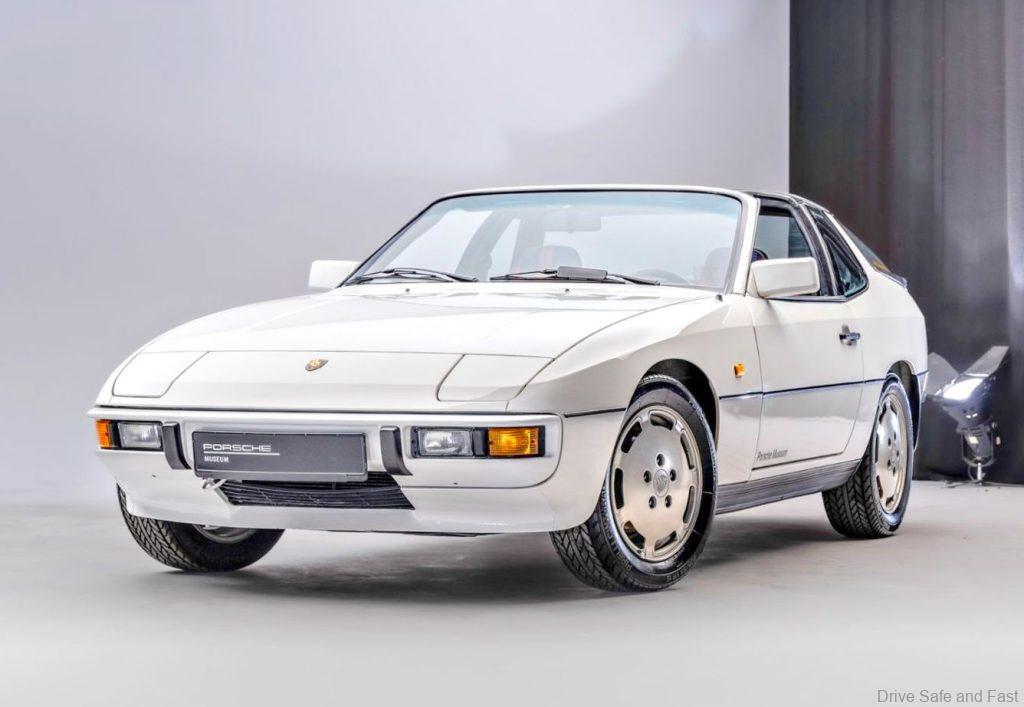Development of this 924 Turbo Targa began on 1 May 1977
Have you seen this Porsche 924 …….. ever? Did you even know this version of the 924 existed?
Well, here is some information and more pictures on this unique sports car from Germany.
Developed in the late ’70s, this unique Porsche 924 combines the iconic Targa body style with a turbocharged engine, making it a standout in Porsche history. Initially envisioned to bridge the gap between the entry-level 924 and the high-performance 911, this prototype showcases the innovative spirit of Porsche.
With a turbocharged 2.0-liter engine producing 170 PS, the 924 Turbo Targa was designed for performance enthusiasts who wanted the thrill of a turbo without the price tag of the 928.
Featuring striking Alpine white paint and tartan fabric interiors, this prototype is a rare gem that never made it to production but remains a fascinating chapter in Porsche’s story. Maybe a restomod version should be consider or even a ‘Singer’ version? What do you think?




PRESS RELEASE: Development of the 924 Turbo Targa began on 1 May 1977 under job number 927/57. In typical Porsche fashion, two project numbers were assigned: the left-hand drive was given design number 941, the right-hand drive 942. A version with a naturally aspirated engine and one with a turbo engine were part of the plans from the outset. Both the chassis and the engine were to be retained unchanged.
In terms of design, on paper, the designers entertained several ideas of a 924 Targa with a manually removable roof section, for example as a coupé with a large glass tailgate or as a standalone notchback version.
At the same time, a completely new idea of a Targa concept for the future began to take shape. The idea was to make it possible to slide a glass roof over the rear window – as was later the case with the 911 Targa (type 993).
However, the classic Porsche approach with a roll-over bar was also pursued. The transaxle Targa prototype was based on a 924 Turbo from the 1979 model year in glistening Alpine white with strongly contrasting tartan centre panels on the seats.
Thanks to the inconspicuous way the Targa concept integrated into the overall line of the car, and due to the fact that the finished car appeared almost production-ready, even 45 years later the one-off from the Porsche Museum collection still looks like a representative of the series production model. The removed roof section is only noticeable on closer inspection.
The roofline of the Targa concept car follows the familiar 924 shape with a large glass dome. The upper side of the bar, which makes up around a third of the top of the roof, is made of the same plastic as the Targa roof, resulting in a harmonious look reminiscent of the 911 model.
The special key for locking and unlocking the roof is within easy reach in the glove compartment, and the speedometer shows a whopping 328 kilometres. When was the last time that the prototype, which we move metre by metre by hand through the photographic studio, drove under its own power?
Development halted
The project completion recorded in the ‘Documentation of development projects and model lines’ is dated 29 February 1980. Because the development and tooling costs were estimated to be too high and the rigidity of the body was questionable, development of a 924 Targa was halted.